7 Best Bodyweight Squat Variations (with Pictures!)
Bodyweight squats are a classic inclusion into just about any calisthenics workout. But, like most calisthenics exercises, taking advantage of its many variations is needed to maximize muscle growth.
In this article, we’ve listed a variety of highly effective and diversely purposed variations of the unweighted squat.
Prior to trying out the pistol squat or other advanced variations, it is best to first master the conventional squat and other variants of similar intensity. Doing so will help build the baseline of strength and technical familiarity needed for performing tougher exercises.
What is a Bodyweight Squat?
A bodyweight squat is simply a closed chain lower body compound movement performed with marked use of knee and hip biomechanics.
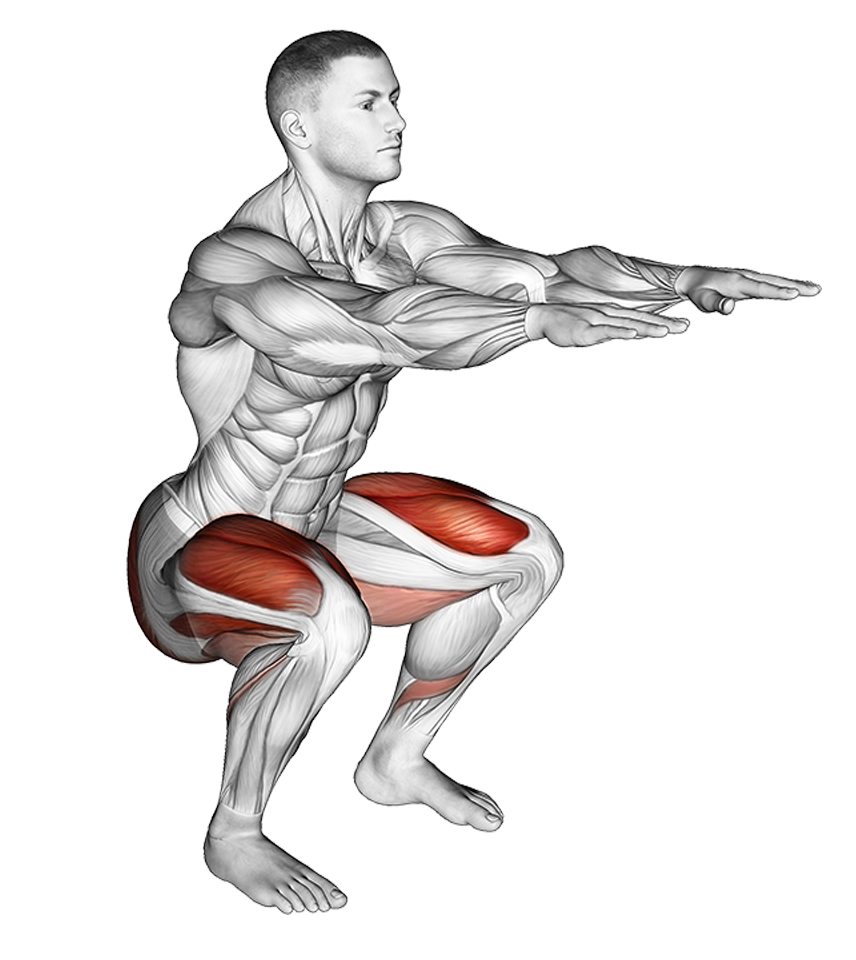
During the descending phase, the main mechanics are knee flexion, hip flexion and ankle dorsiflexion, with the ascending phase featuring the opposite mechanics of extension and plantar flexion.
Bodyweight squats are most often performed for moderate to high volume sets due to the relatively low amount of resistance involved; As the name implies, this is as a part of an otherwise bodyweight workout program.
The majority of bodyweight squat variations alter the mechanics of the exercise so as to emphasize different muscle groups. That, or otherwise increase tension, intensity and difficulty by placing the athlete in a less mechanically-advantageous position.
Bodyweight Squat Variations
1. The Conventional Bodyweight Squat
The conventional bodyweight squat is the regular form of squat referred to when athletes speak of performing unweighted squats. It closely replicates the natural movement pattern that is a functional squat, making it both fundamental in application and easy to perform.
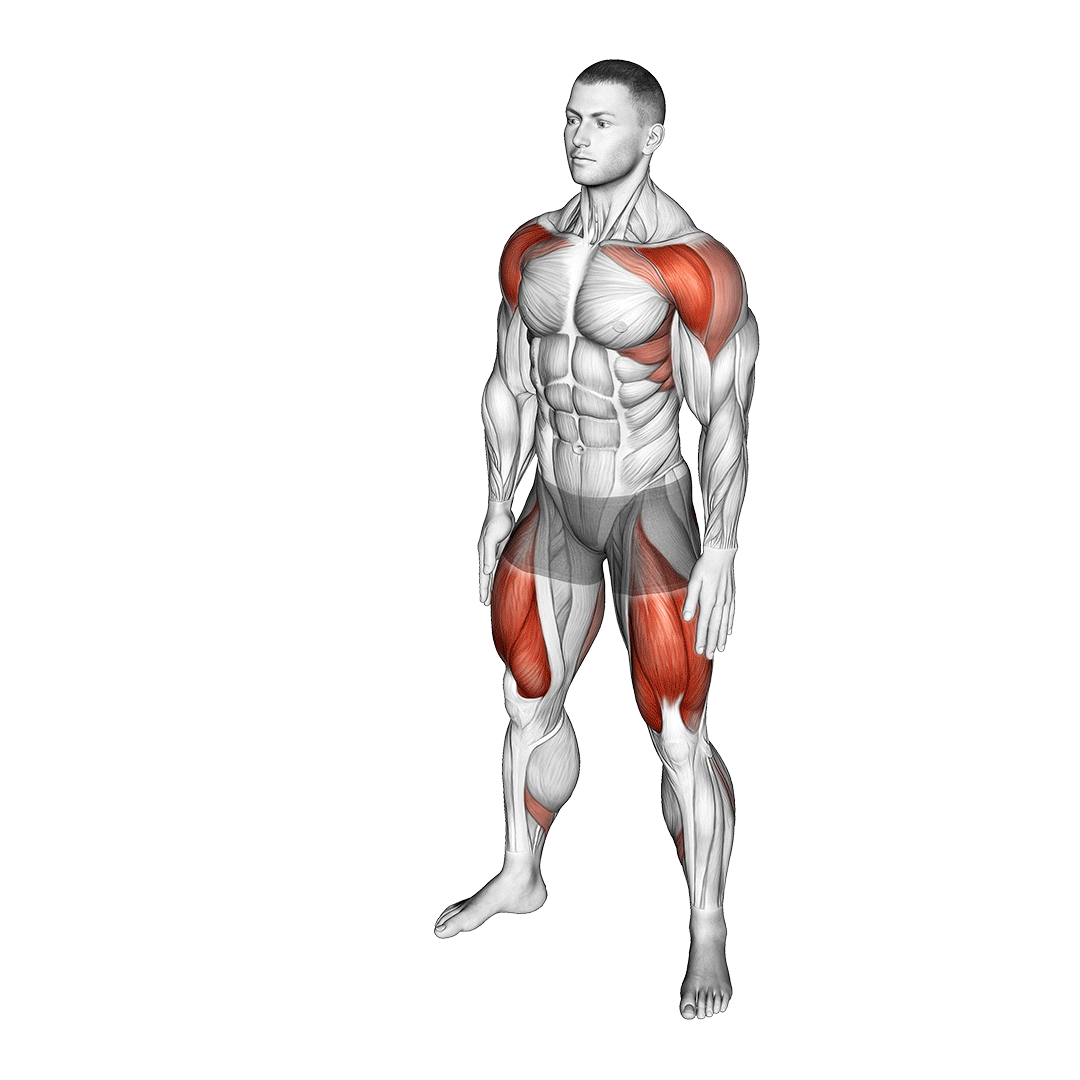
Like most other bodyweight squat variants, the conventional bodyweight squat is a closed chain compound exercise meant to target the muscles of the legs.
Being unweighted, the majority of calisthenics athletes perform the exercise for moderate to high amounts of volume in order to reach the desired level of intensity.
Because no additional resistance is used, the difficulty of each repetition is largely dictated by individual weight and technical expertise.
Muscles Worked
The conventional bodyweight squat will target the quadriceps femoris, the hamstrings and the glutes in equal measure.
Furthermore, in terms of static muscle recruitment, the abs, the muscles of the lower back and the erector spinae also play a role.
Benefits as a Bodyweight Squat Variation
Serving as the basic form of squat with which every novice should master, the conventional squat is effective at developing basic technical familiarity and a solid level of lower body strength.
This is further compounded by its simplicity and full range of motion, targeting each major muscle group of the legs in a moderately intense fashion.
How-to:
To perform a repetition of the conventional bodyweight squat, the athlete will set their feet a comfortable distance around hip-width apart, toes pointing forwards and spine neutral as they contract their core.
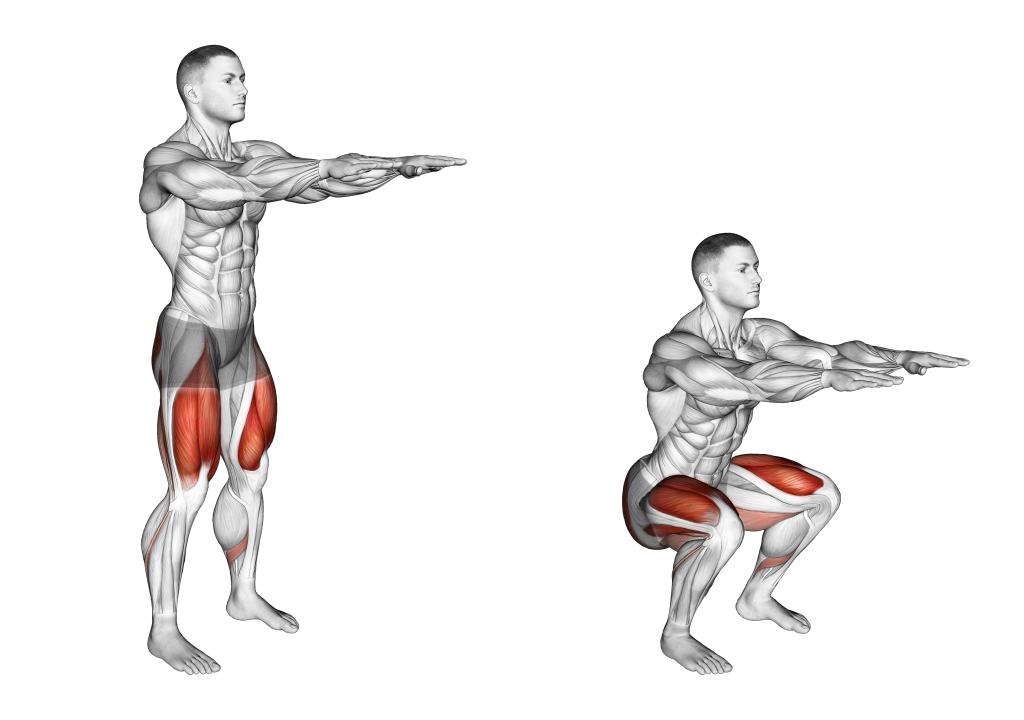
From this stance, the athlete will then push their pelvis back and simultaneously bend at the knees, lowering themselves until the crease of their hip is at least parallel with the top of the knees; This is what is known as “parallel depth."
Once reaching at least parallel depth, the athlete will then drive through their heels, push their pelvis forwards and extend their knees so as to rise back into the original upright position.
At this point, the repetition is considered to be complete.
2. The Lateral Squat/Side Squat
The lateral squat is a unilateral variation of squat involving the athlete lowering themselves towards one side of the body as the opposite leg is extended laterally. Doing so not only emphasizes the muscles of one side of the body, but will also elicit a greater training response in the hip adductors.

Side squats are often performed in rapid succession so as to create a more dynamic workout.
Because of their unilateral nature, the side squat is an effective method of increasing the intensity of a calisthenics lower body workout without the need for additional equipment - or a greater sense of balance, such as with lunges.
As a side note - the side squat is distinct from the more popular side lunge. The latter does indeed feature a similar movement pattern, but does not involve the athlete rising back into a standing position between repetitions.
Muscles Worked
The lateral squat will emphasize the adductor longus and adductor magnus, but nonetheless still work the remaining sections of the hamstrings and quadriceps. This, of course, is in addition to the glutes and the muscles of the calves.
Benefits as a Bodyweight Squat Variation
Side squats are excellent for increasing the intensity of each repetition as more of the body’s weight is placed on one side of the body at a time, thereby forcing it to work harder.
Apart from being more intense, the side squat is also quite effective at targeting the hip adductor muscles - of which are often left forgotten by other calisthenics lower body exercises.
How-to:
In order to perform a repetition of the lateral squat, the athlete will first assume a wide squat stance. They do this by positioning their feet approximately shoulder-width apart, toes pointing slightly outwards, spine neutral and chest pushed outwards.

Now in the correct stance, the athlete then lowers towards one leg by bending the leg at the knee and both flexing and adducting their hip in the direction of the bent leg. The opposite leg should stretch out to the side, remaining fully extended with the soles remaining on the floor.
Once the pelvis is at least parallel with the knee of the bent leg, the athlete will reverse the motion and slowly rise back to a standing position.
This completes the repetition - but remember to repeat it with the other leg as well.
3. The Bodyweight Sumo Squat
Sumo squats are simply a variation of conventional squat performed in a “sumo” stance - meaning one wider than normal. This emphasizes the muscles of the posterior chain to an even greater degree while simultaneously shrinking the exercise’s range of motion.
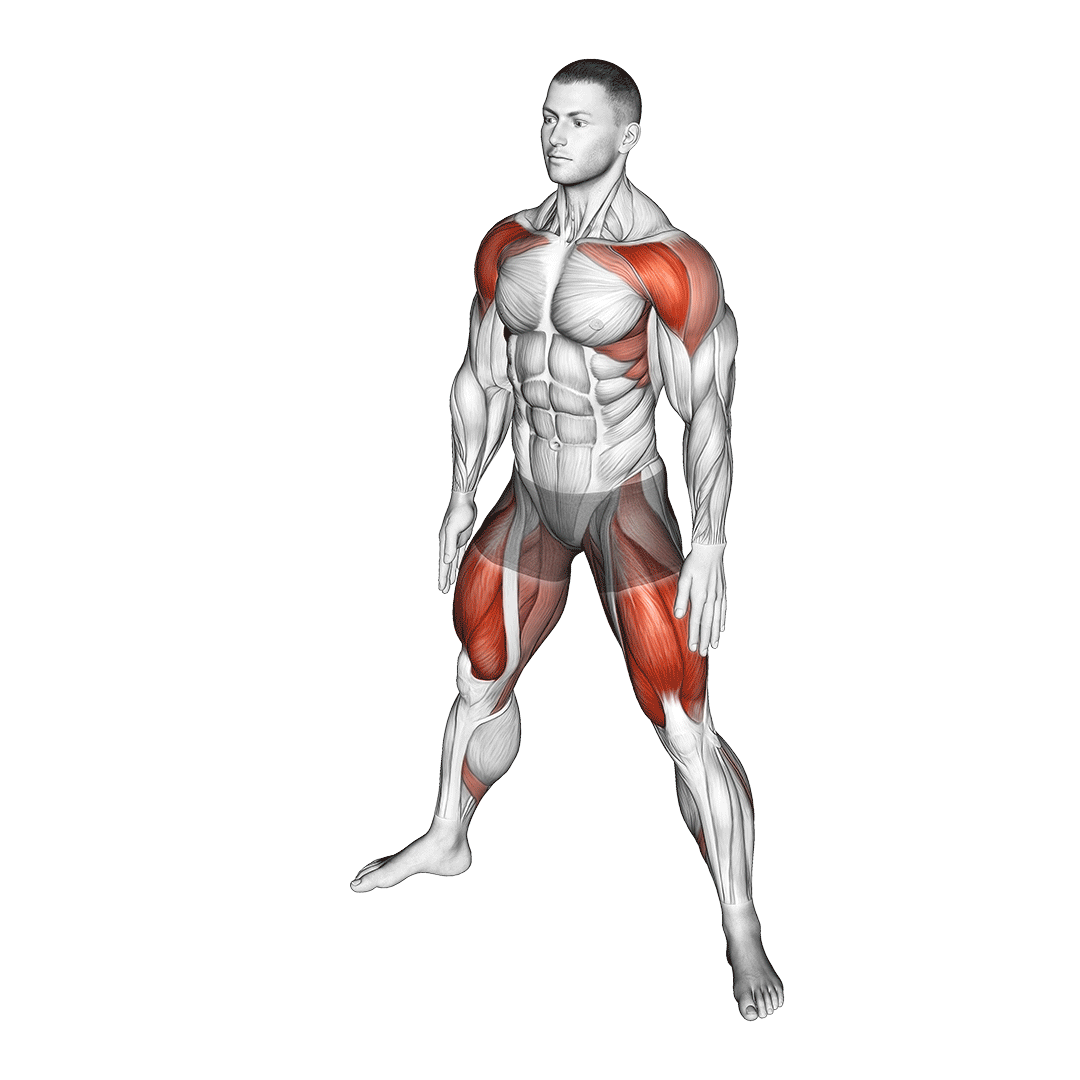
While the conventional sumo squat is most often preferred when performed with free weights, its benefits also partially carry over to the bodyweight variation. Most notably, greater volume and decreased knee flexion are major advantages to picking the sumo squat.
Muscles Worked
Sumo squats prioritize the glutes and hamstrings, but will also work the quadriceps to a somewhat lesser degree as well.
Usage of stabilizer muscles remains much the same as would be seen with a conventional bodyweight squat.
Benefits as a Bodyweight Squat Variation
As mentioned previously, the main benefits of the sumo squat lie in its shorter range of motion and greater focus on the posterior chain. A shorter range of motion means that each repetition is more mechanically efficient, requiring less effort to complete and thereby allowing for greater volume to be performed.
Range of motion and muscular recruitment aside, sumo squats also require significantly less knee flexion and also place comparatively less pressure on the knee joint itself.
For calisthenics athletes who perform high sets of repetitive conventional squats, this can save the function of their leg joints.
How-to:
In order to perform a repetition of the sumo squat, the athlete will assume a sumo stance by replicating the stance of a conventional squat, only with the feet significantly wider than hip-width apart.
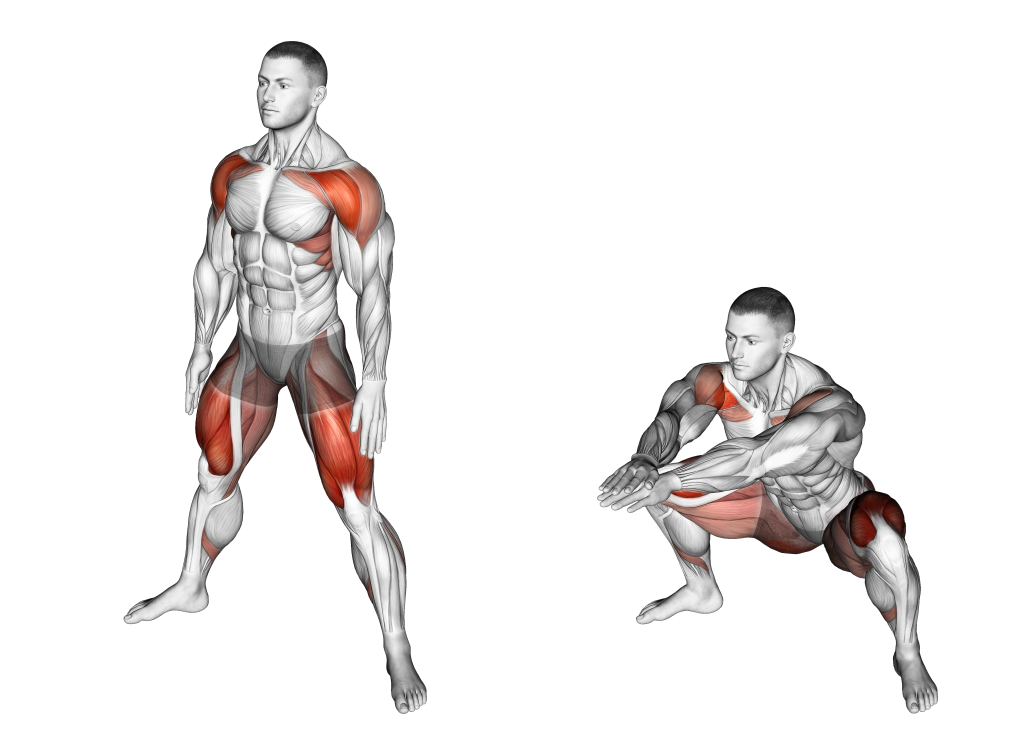
The exact stance width will depend on mobility and individual bodily proportions, but generally around shoulder-width is applicable for most athletes. The toes should point forwards or slightly outwards, with the core braced, spine neutral, head facing forwards and chest pushed upwards and outwards.
Now in the correct stance, the athlete will lead the movement by first pushing their hips back, bending at the knees as the pelvis begins to drop downwards.
Once reaching parallel depth or lower, the athlete will squeeze their glutes and drive through their heels, rising back to a standing position. Now upright, the repetition is considered to be complete.
4. The Split Squat
Although technically its own classification of exercise, the split squat is similar enough in taxonomy and mechanics to be considered a squat variation as well.
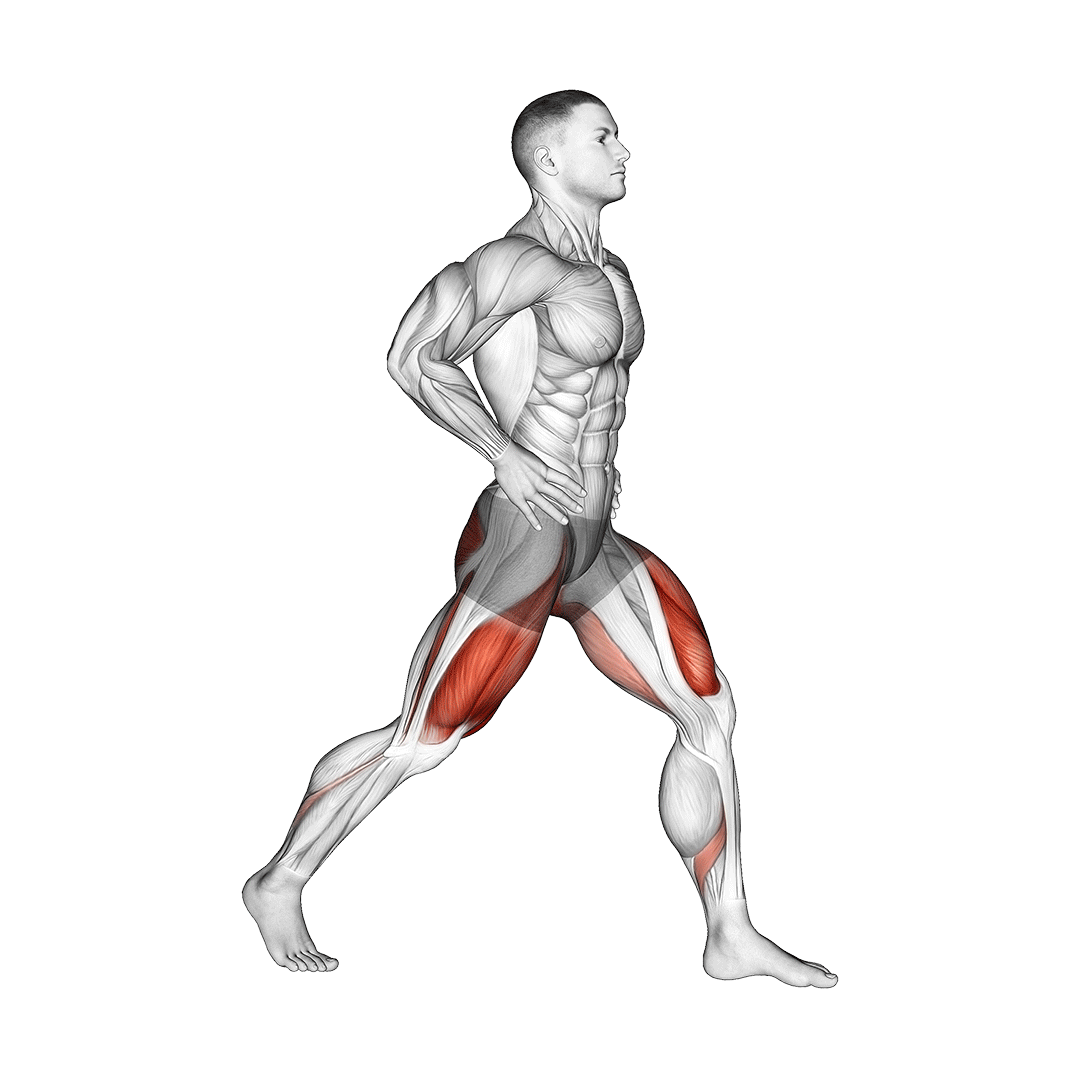
Split squats are a unilateral compound movement performed in a staggered stance, meaning that one foot is set forwards while the other is extended behind the body.
This staggered stance is adopted so as to better emphasize the quadriceps, build functional strength and otherwise achieve a greater intensity with each repetition despite no additional resistance.
Despite these advantages, split squats also suffer from a few issues - namely those of difficulty balancing, being more time-consuming and greater stress on the knees.
Muscles Worked
The split squat will emphasize the quadriceps femoris to the greatest extent, but nonetheless also target the glutes and hamstrings to a lesser degree as well. Of course, this is on one side of the body, with the back-facing leg acting solely in a stabilizing capacity.
Benefits as a Bodyweight Squat Variation
As a unilateral exercise, split squats are both more intense with each repetition and build more functional strength in each individual leg. This is because many movements in sports and real life are performed in an unbalanced or single-legged manner, rather than closely replicating a conventional squat.
Furthermore, split squats themselves act as a gateway to a number of other staggered squat variations. Exercises like the Bulgarian split squat, lunge and even step-ups are all more intense “versions” of the split squat.
How-to:
In order to perform a repetition of the split squat, the athlete will first enter a split squat stance by stepping one foot forwards and stretching the other behind them, raising the hindleg’s heel off the ground.
Much of the body’s weight should be placed on the foreleg, with the hindleg acting solely as a source of stability.
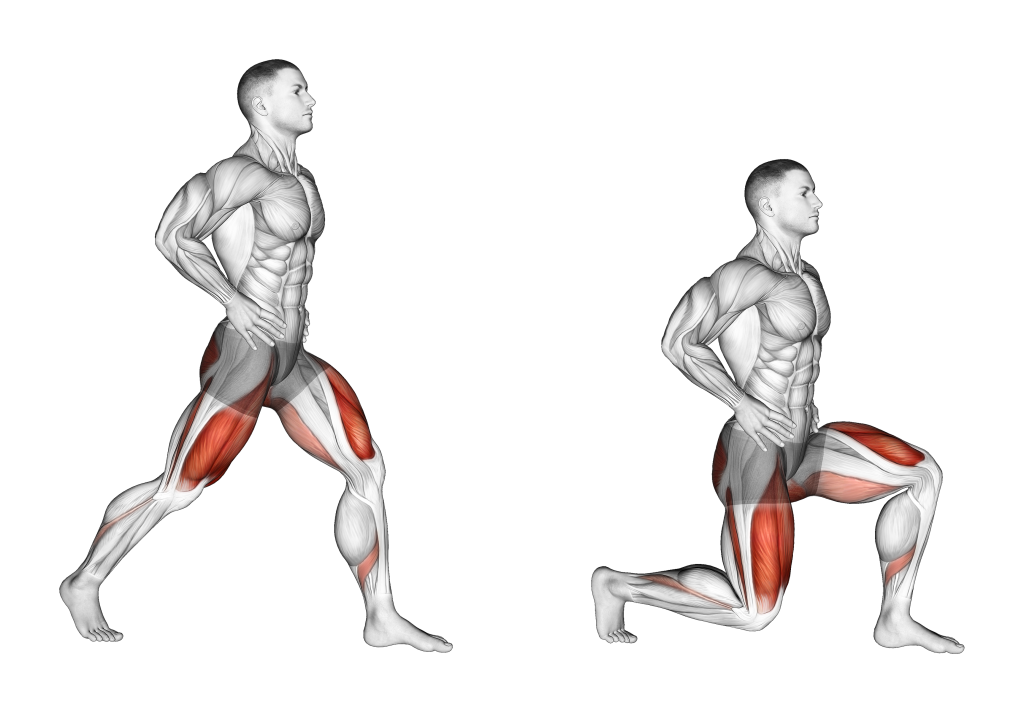
As always, the spine should also be neutral, the core braced and the head facing forwards.
From this initial staggered position, the athlete then bends at both knees simultaneously, kneeling downwards until their knees are at a 90 degree angle of flexion. The hindleg should not touch the floor as this occurs.
Once both legs are appropriately bent, the athlete then drives through their heel, extending their legs rising back into an upright position. At this point, the repetition is complete.
Subsequent repetitions do not require the athlete to return to a bilateral stance. Instead the athlete should remain in the staggered stance throughout the set, never taking their feet off the floor. Don’t forget to repeat the same number of repetitions with the legs swapped.
5. The Plié Squat
The Plié squat is a bodyweight squat variation where the athlete’s stance is set as wide as possible, toes pointing out to the sides. In comparison to the sumo squat, the Plié squat is even more extreme in terms of stance width.
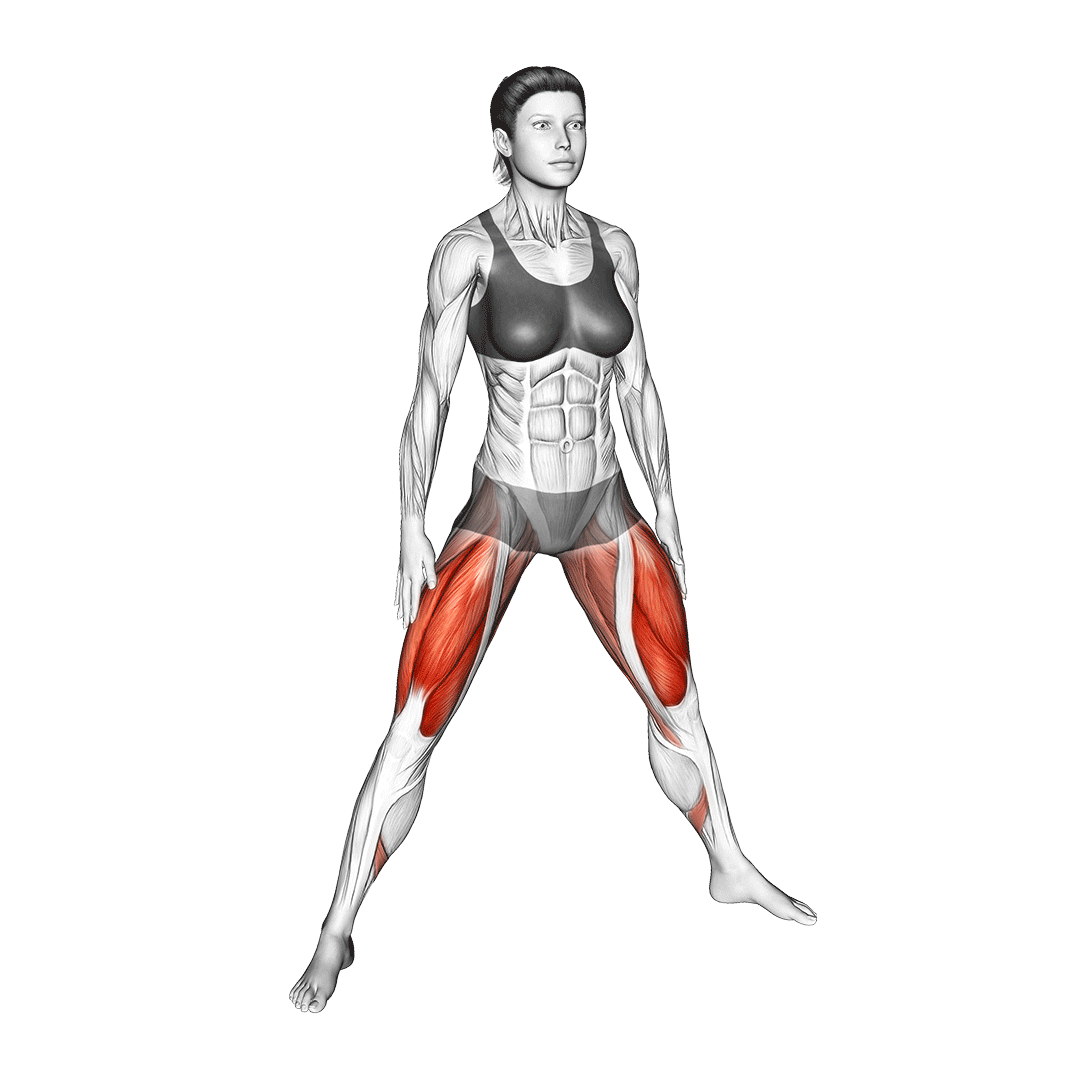
Although some controversy of hip and ankle injury surrounds the Plié squat, it is undeniably effective at emphasizing the hamstrings and the hip adductor muscles. As such, it is considered to be an advanced squat variation that is better performed once the athlete has mastered the conventional sumo squat.
Muscles Worked
The Plié squat targets the hamstrings glutes and hip adductors to the greatest extent, but will also work the quadriceps femoris to a lesser intensity.
Benefits as a Bodyweight Squat Variation
This particular variation of bodyweight squat is best known for targeting the hip adductors and posterior chain. Of course, such benefits are in addition to its short range of motion - allowing for greater volume to be performed with the same comparative level of exertion.
How-to:
In order to perform a Plié squat, the athlete will set their feet wider than shoulder-width apart, turning the toes outwards and aligning the knees alongside. The same form cues of a braced core, neutral spine and forward-facing head should also be followed.
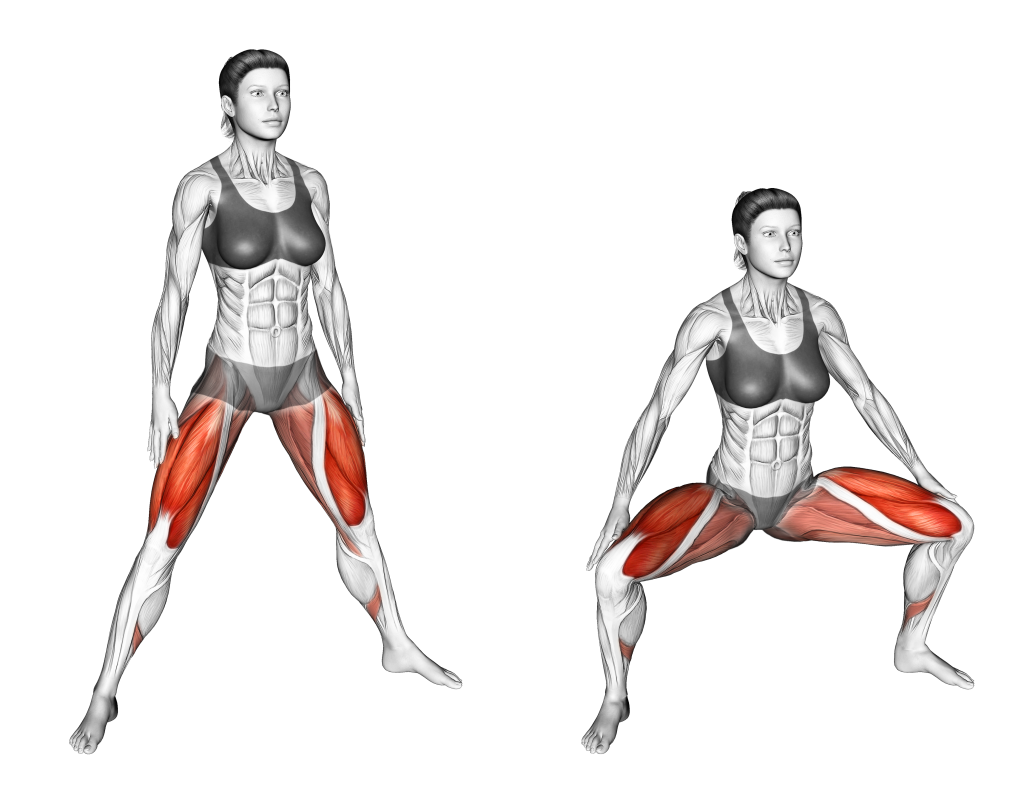
Once in this rather wide stance, the athlete then bends at the knees and pushes their hips back if mobility permits. They will lower themselves until the thighs are at least parallel with the floor.
To complete the repetition, the athlete drives through their heels and squeezes their glutes, rising back to a standing position.
6. The Cossack Squat
A single leg squat variation - Cossack squats are comparable to lateral squats in movement pattern, only with a deeper squat, wider stance and comparatively greater intensity with each repetition.
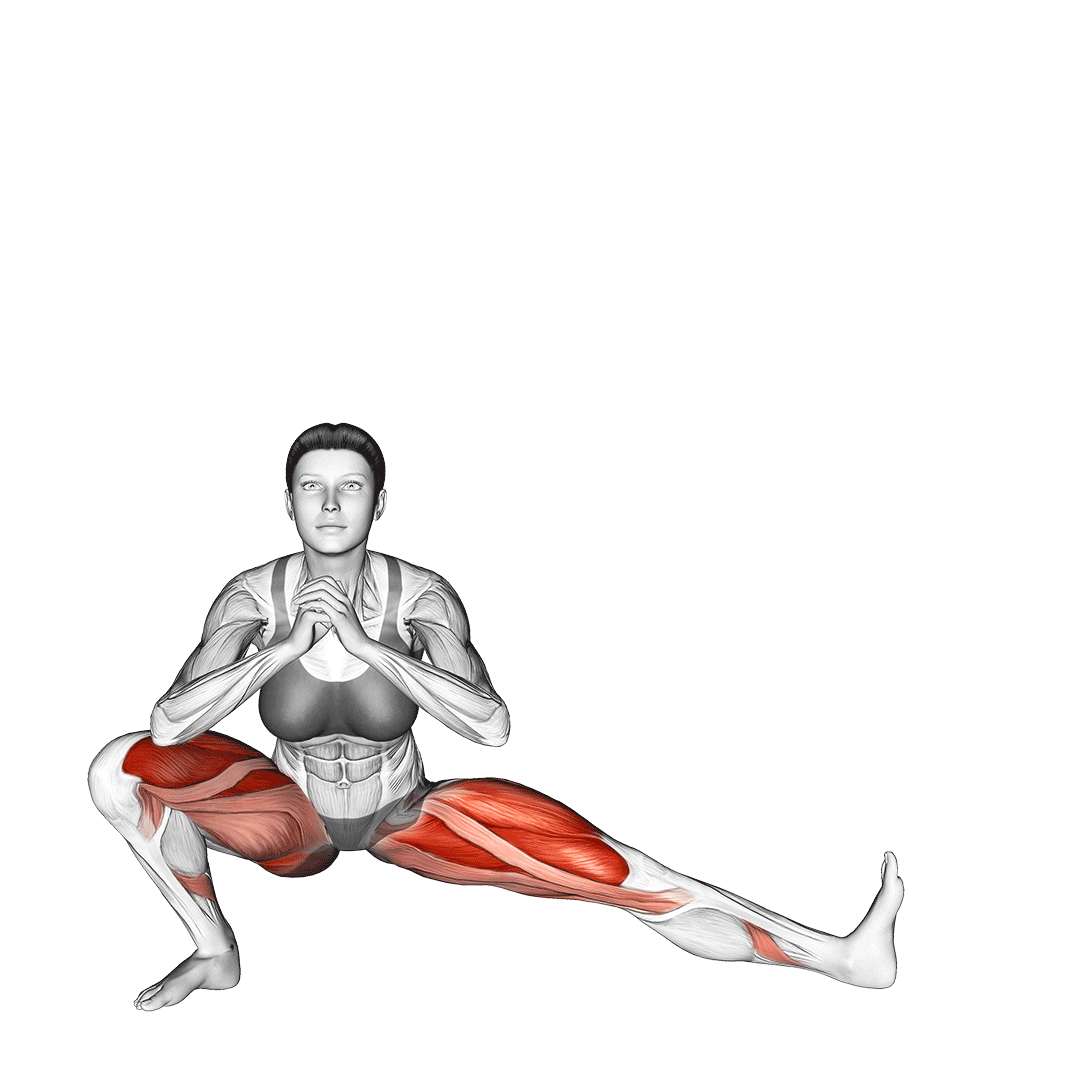
The Cossack squat is primarily performed so as to strengthen the hamstrings, hip adductors and build mobility throughout the lower section of the body. Because of its unilateral nature, less volume is needed in order to reach sufficient training intensity.
Muscles Worked
Cossack squats emphasize the quadriceps, hamstrings and hip adductors - but will also target the quadriceps femoris as well.
Benefits as a Bodyweight Squat Variation
Apart from being quite effective at strengthening the various muscles of the legs, the Cossack squat helps build lower body mobility due to its wide stance and the depth to which the athlete will squat.
Cossack squats can essentially be considered a progression from exercises like the side lunge, lateral squat or side-to-side squat.
How-to:
To perform a Cossack squat, the athlete will adopt a wide stance by setting their feet wider than shoulder-width apart, the toes of one foot pointing forwards and the opposite foot being lifted off the ground, toes pointed to the side.

Throughout the repetition, the torso should be pointed vertically upwards, one foot’s heel atop the floor and the other bearing most of the body’s weight.
From this stance, the athlete will bend their standing leg at the knee as they both push their hips back and to the side of the working leg. The opposite leg should stretch out from the side, aiding with balance and rotating around its heel.
The athlete then follows this unilateral squatting motion downwards until reaching maximum depth - preferably below parallel, or what is otherwise known as the “ass-to-grass” depth.
From this maximum depth, the lifter drives through their standing heel and returns to a standing position - thereby completing the repetition. Remember to repeat the movement with the opposite side.
7. The Pistol Squat
Considered to be one of the most difficult variations of bodyweight squat, the pistol squat is named so because the lifter lowers themselves to full squat depth using one leg, with the other extended straight forwards. This forms the body into the shape of a firearm when viewed from the side, hence the name “pistol” squat.
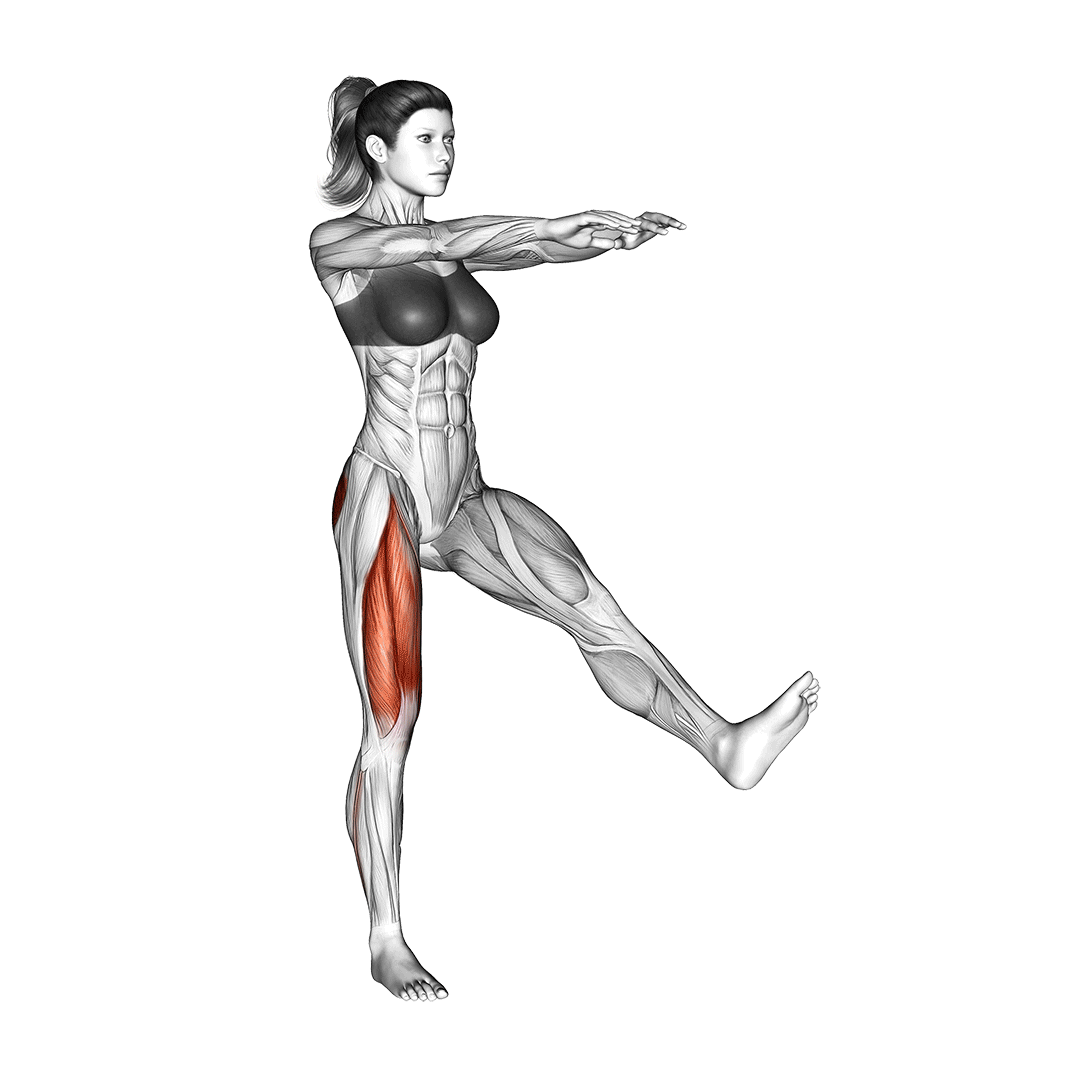
Pistol squats are performed as an advanced progression from most other bodyweight squats, and are used to build not only strength and mass, but also balance, mobility and technical skill as well.
Muscles Worked
The pistol squat emphasizes the quadriceps the most, but will also work the hamstrings, glutes and the calves to a significant level.
Benefits as a Bodyweight Squat Variation
The pistol squat is significantly more intense than most other types of bodyweight squat. Apart from allowing calisthenics athletes to continue progression, this also means that it saves the athlete time and energy by requiring far less volume with each set.
Furthermore, pistol squats are also employed by individuals who do not focus on bodyweight exercise. This is due to its capacity to build athletic skill, correct muscle imbalances, improve lower body mobility and develop muscular explosiveness.
How-to:
To perform a pistol squat, the athlete will begin by standing with their feet around hip-width apart, toes pointing forwards.
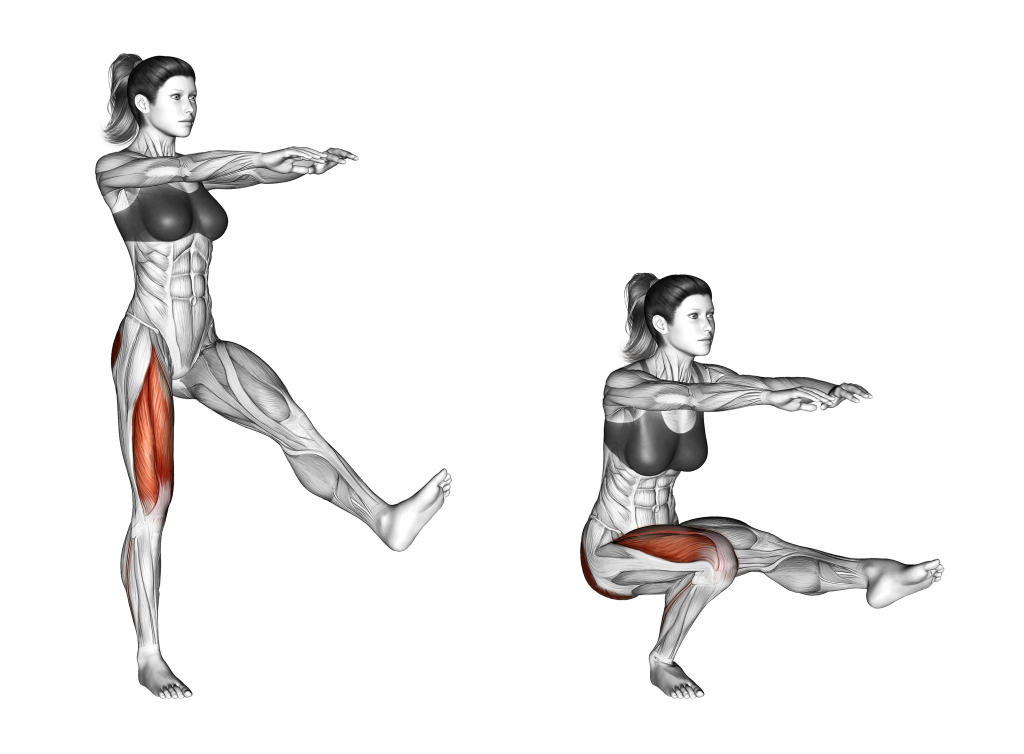
From this standing stance, the athlete will extend one leg forwards, pointing their arms forwards or out to the sides for greater balance. Now standing on one leg, the athlete drives their hips back and downwards as they simultaneously bend the remaining leg at the knee.
The athlete continues this one-legged squatting motion until they have reached maximum depth, where they will drive through their heel and rise back to the standing position, keeping the leg extended all the while.
From here, the rep is complete.
Unlike conventional squats, the pistol squat may be difficult to balance when pushing the hips too far back. We suggest practicing the movement with the raised leg atop a bench prior to attempting a full rep.
Which Bodyweight Squat Should You Pick?
Because of how many different variations are out there, deciding on just one can be difficult.
Fortunately, if you’re a calisthenics athlete or bodyweight exerciser, there is no need to pick just one. In fact, doing so may actually be counterintuitive.
Instead, it is best to structure your bodyweight workout plan by selecting 2-3 lower body exercises that each emphasize a different aspect or muscle group of the legs. These can all be squat variations, or other types of movements, like lunge variations or split squat variations.
A good starting point for novices is to combine a beginner-level bodyweight squat variation (like the conventional squat) with one that involves some level of adduction, like the lateral squat.
References
1. Christopher, Logan. The Ultimate Guide to Bodyweight Squats and Pistols. N.p.: CreateSpace Independent Publishing Platform, 2013. ISBN: 9781489594846, 1489594841
2. Gaddour, Bj., Men's Health Magazi, Editors of. Men's Health Your Body Is Your Barbell: No Gym. Just Gravity. Build a Leaner, Stronger, More Muscular You in 28 Days!. United States: Rodale, 2014. ISBN: 9781623363840, 1623363845
